Nathan Eovaldi Is Making Delicious Lemonade
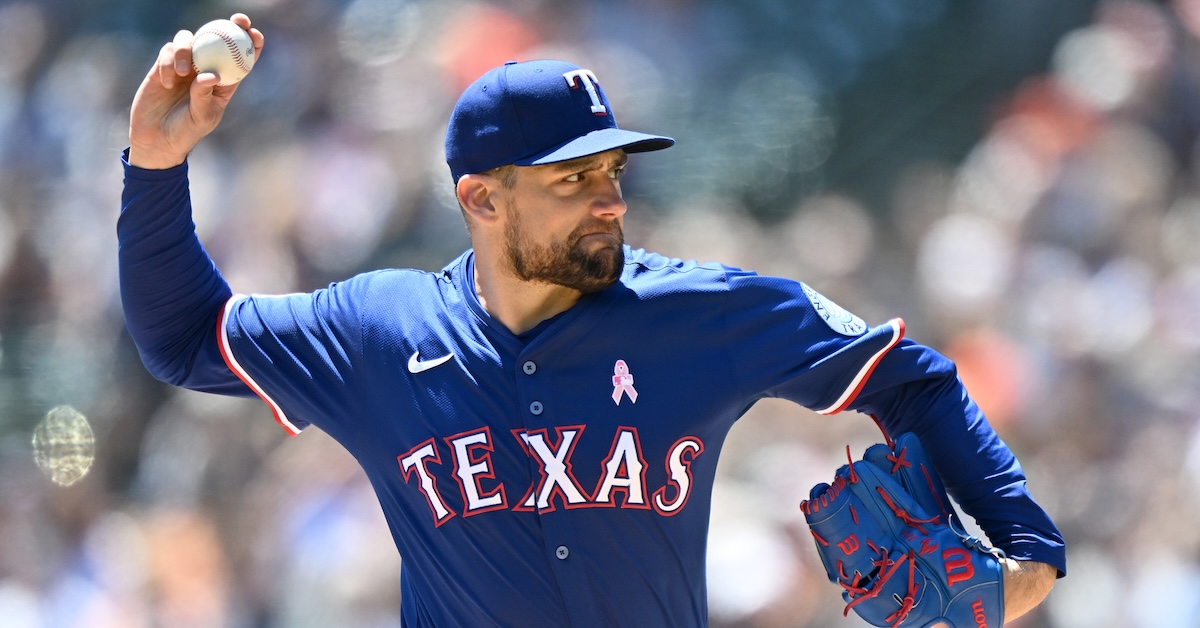
If motor preferences were the final word on pitcher performance, Nathan Eovaldi would be sitting on a beach somewhere.
Eovaldi throws from a low slot, releasing his pitches from an average arm angle of 30 degrees. (Zero degrees is fully sidearm; 90 degrees is straight over the top.) Many low-slot pitchers have a supination bias. There are downsides to being a supinator — their preference for cutting the baseball tends to produce crummy four-seam fastballs — but they usually have no trouble throwing hard breaking balls; they can also more easily harness seam-shifted wake to throw sinkers, sweepers, or kick-changes. Low-slot supinators, like Seth Lugo, can basically throw every pitch in the book. High-slot pronators like Ryan Pepiot or Lucas Giolito don’t have that sort of range, but make up for it with excellent changeups and high-carry fastballs.
Eovaldi is, tragically, a low-slot pronator. Not many low-slot pronators make it to the big leagues. The pronation bias blunts their ability to throw hard glove-side breakers, and the low arm angle obviates the pronator’s nominal advantage, killing the carry on their fastball. As Tyler Zombro of Tread Athletics (now a special assistant of pitching for the Cubs) said in his primer video on motor preferences, “I know in stuff models and just off of Trackman alone, this arsenal with this slot is not that attractive.” Read the rest of this entry »
Another Way To Think About Pull Rate
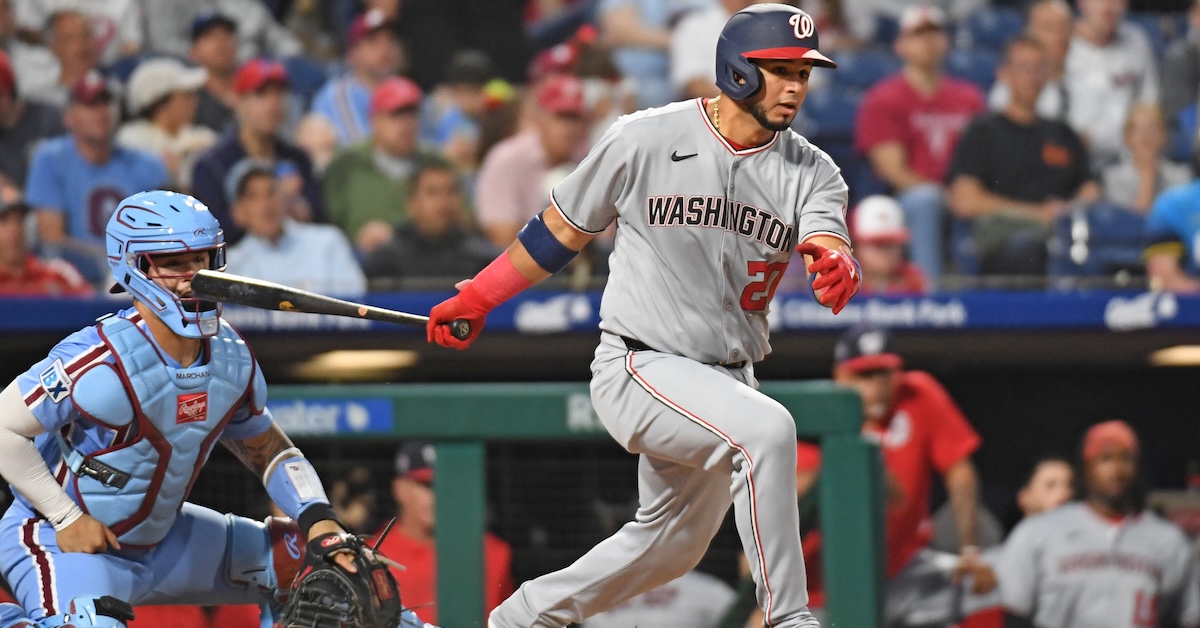
Every time I watch Oneil Cruz hit, I end up thinking about pull rate. It seems like he’s always using his long arms to yank a ball into right field even though the pitch came in all the way on the outside corner. I’m not quite right, though. According to our leaderboards, Cruz ranks 35th among all qualified players in pull rate. According to Statcast, he’s at 55th, not even in the top third. Maybe it’s just that seeing someone do something as bonkers as this can warp your perspective:
But there is more than one way to think about pull rate. Sometimes you get jammed. Sometimes you have to hit the ball where it’s pitched. Sometimes the situation demands that you shorten up and sell out for contact. Those three examples might tell us a bit less about the intent behind your swing, because you didn’t get to execute your plan. We have ways to throw them out. Today, we’ll look into players whose overall pull rate is notably different from their pull rate when they square up the ball. As a refresher, Statcast plugs the respective speeds of the ball and the bat into a formula to determine the maximum possible exit velocity, and if the actual EV is at least 80% of that number, it’s considered squared up.
I pulled numbers from 2023 through 2025 for each player who has squared up at least 250 balls during that stretch. As you’d expect, the numbers are mostly pretty similar. Of the 219 players in the sample, 165 of them have a difference between their overall pull rate and their squared-up pull rate that’s below three percentage points. No player has a pull rate when squaring the ball up that’s more than 6.5 percentage points off their overall pull rate, but there are a few interesting names here. Read the rest of this entry »
Eric Longenhagen Prospect Chat: 5/16/25
| 12:03 |
: Howdy, everyone. Hope you’ve all had a pleasant week. I’m enjoying the last little bit of mild weather here in Tempe and looking forward to conference tournament play.
|
| 12:04 |
: Brewers list went up yesterday:
|
| 12:05 |
: I’ll probably keep things tight to an hour today. I’m flying to Florida next Friday and I’m going to chat earlier in the day, so be on the lookout for that next week.
|
| 12:06 |
: Okay, let’s address your many queries.
|
| 12:06 |
: Adael Amador looks not great, but maybe its the Rockies stink? Also, Jared Thomas/Kyle Karros legit? Karros seems more floor and Thomas more ceiling.
|
Five Things I Liked (Or Didn’t Like) This Week, May 16
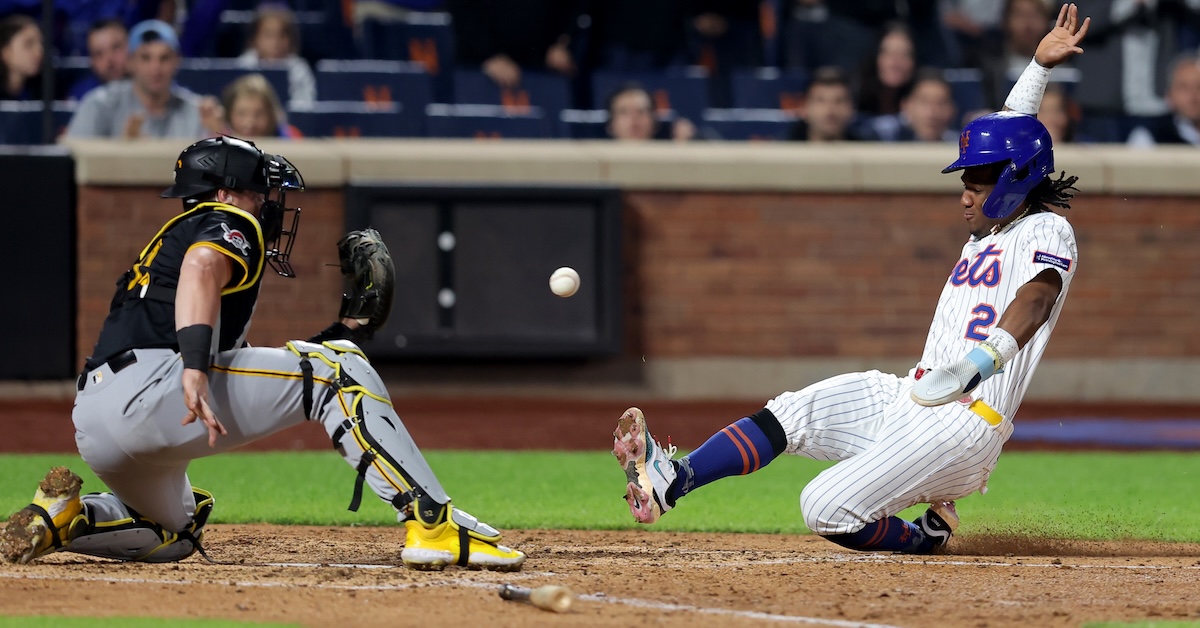
Welcome to another edition of Five Things I Liked (Or Didn’t Like) This Week. Actually, the title is a misnomer today. A week of baseball is great, but you know what else is great? A single game of baseball. Monday night, Paul Skenes and the Pirates took on the scalding-hot Mets. It was one of the most exciting matchups we’ll get all regular season, pitting my pick for the best pitcher in baseball against one of the top offenses in the game. This being baseball, the best pregame matchups don’t always lead to the most exciting events. This time, however, the hype was warranted, and the game was both delightful and delightfully weird. So with apologies to Zach Lowe for changing the format he created, let’s try this again: Welcome to Five Things I Liked During The Mets Pirates Game From Monday.
1. My Skenes vs. Your Team
It’s downright crazy how good Skenes is. He’s so fun to watch, at least as long as he isn’t making your team look silly. He throws everything, and all of it is nasty. He drew swinging strikes on five different pitch types, and some of them left batters baffled:
Juan Soto doesn’t look like that very often. But that’s because pitchers like Skenes also don’t come around very often. Seriously, this pitch was 94 miles an hour?! This is unfair:
The Mets hassled Skenes repeatedly throughout his six innings. He surrendered six hits, tying a career high, and walked three. But when there were runners on base, Skenes found another gear. Five of his six strikeouts came with men on. He threw harder, pitched for whiffs, and generally flummoxed his opponents. He’s not always going to allow only one run, but despite the Mets finding occasional cracks in his armor, one earned run felt like a fair result. When Skenes is on the mound, the other team starts at a disadvantage. Read the rest of this entry »
Kris Bubic Sweepers All Before Him

The Kansas City Royals have an excellent starting rotation. Starting pitching (along with Bobby Witt Jr. turning into Honus Wagner with a mullet, I guess) carried the Royals to the ALDS last year. It’s also why the Royals will be well-positioned in the AL Central race if the Tigers ever realize that they’re not actually the 1975 Reds.
But even in such a deep, well-rounded unit, one man must lead the charge. Is it ace Cole Ragans? No. Is it one of Seth Lugo, Michael Lorenzen, or Michael Wacha, Kansas City’s army of rejuvenated Millennials? Again, no.
There’s More to the Citi Field Raccoon Story
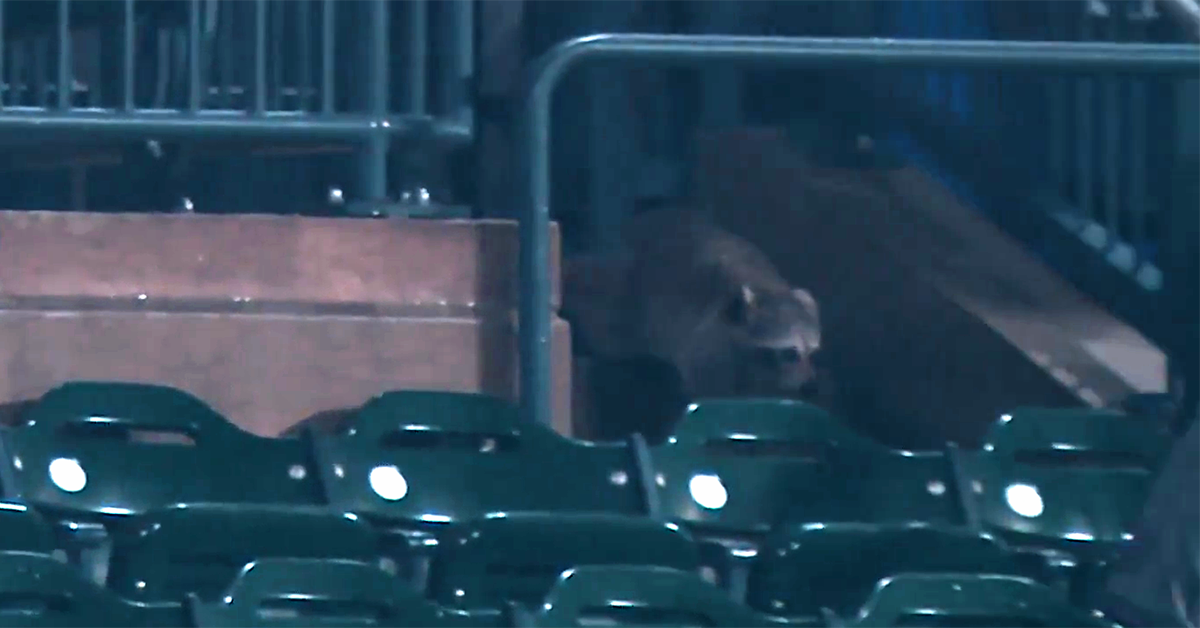
On Wednesday, the Rocket City Trash Pandas shut out Pensacola, 9-0, in the Southern League. In the Midwest League, the Quad Cities River Bandits eked out a 7-6 win over the Dayton Dragons. And in the big leagues, television cameras captured an enormous raccoon traipsing through the Citi Field seats during the seventh inning of the Mets-Pirates game. It was a good day for raccoons at the ballpark.
The major league raccoon went down one row of seats in center field, then back across the next row up, looking for all the world like it was just searching for its seat. “I’m scared of raccoons,” said SNY broadcaster Ron Darling, stammering slightly. The brief clip makes it look like the Citi Field raccoon was simply out for a late-night stroll, not bothering anybody. It turns out there’s more to the story. Read the rest of this entry »
Effectively Wild Episode 2322: Rose-Colored Glasses

Ben Lindbergh and Meg Rowley banter about Julio Rodríguez gifting a homer and then taking one away, two Red Sox outfielders teaming up to make a catch, home-run-robbery terminology, Conor Jackson and remembering some guys who were good for your fantasy team, pouring one out for the Austin Barnes Dodgers era, lopsided scores, and the A’s, then (55:30) discuss Pete Rose’s reinstatement from the permanently ineligible list: why it happened, what it means, and what’s next.
Audio intro: Kite Person, “Effectively Wild Theme”
Audio outro: Andy Ellison, “Effectively Wild Theme”
Link to Julio gift
Link to Julio robbery
Link to Sox catch
Link to The Bandwagon on the catch
Link to Office Space clip
Link to Patrick on lopsided scores
Link to EW bold predictions
Link to BaseRuns standings
Link to A’s sprint speeds
Link to Ben on Rose’s reinstatement
Link to Ben’s Rose obit
Link to Jay on Rose
Link to Wetzel on Rose
![]() Sponsor Us on Patreon
Sponsor Us on Patreon
![]() Give a Gift Subscription
Give a Gift Subscription
![]() Email Us: podcast@fangraphs.com
Email Us: podcast@fangraphs.com
![]() EW Subreddit
EW Subreddit
![]() Effectively Wild Wiki
Effectively Wild Wiki
![]() iTunes Feed (Please rate and review us!)
iTunes Feed (Please rate and review us!)
![]() Spotify Feed
Spotify Feed
![]() Facebook Group
Facebook Group
![]() Bluesky Account
Bluesky Account
![]() Twitter Account
Twitter Account
![]() Get Our Merch!
Get Our Merch!
Podcast (effectively-wild): Play in new window | Download
Subscribe: RSS
Roki’s Rocky Rookie Season Takes a Rough Turn
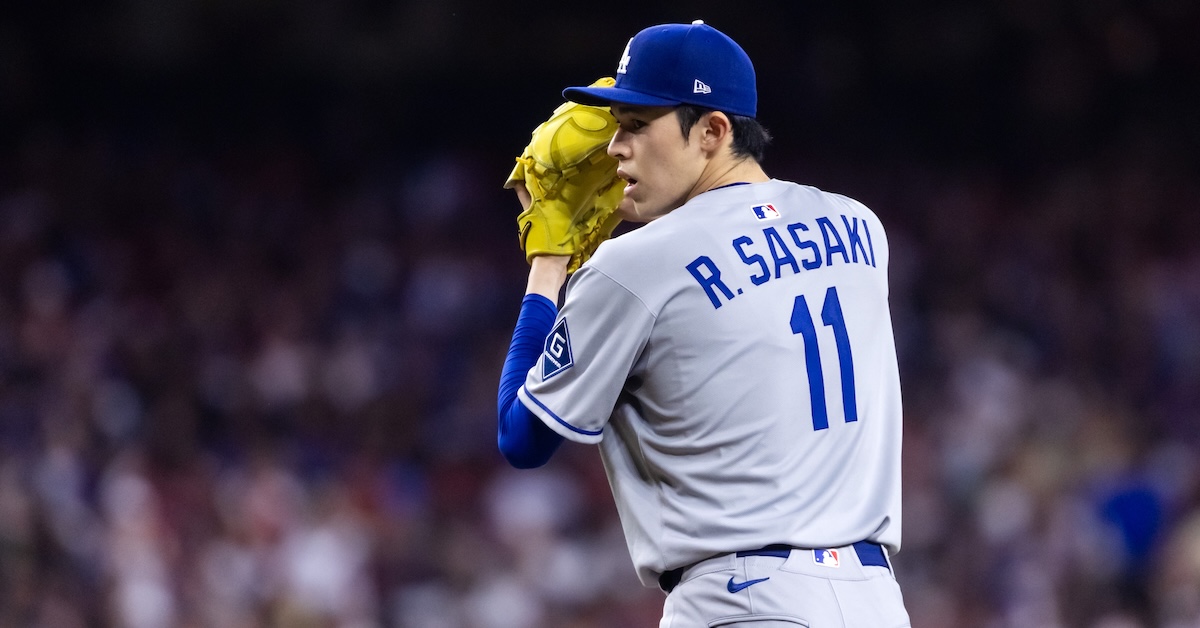
Though Roki Sasaki’s deal with the Dodgers wasn’t anywhere close to the winter’s biggest, few free agents were so coveted or came with as much hype attached. Known as “The LeBron James of Japanese baseball” for his exploits in high school, he was dominant — even transcendent — during his 2021–24 NPB run with the Chiba Lotte Marines. As he went through the posting process, his combination of youth and a tantalizing repertoire featuring an elite, 80-grade splitter as well as a fastball with triple-digit velocity generated widespread interest by teams, though a dip in that velo last year did rate as a cause for concern. Now, eight starts into his career with the Dodgers, the 23-year-old righty has been underwhelming, and now he’s hurt, too. On Tuesday, the team placed him on the 15-day injured list due to a shoulder impingement, continuing the dizzying level of turnover within the rotation of the NL West leaders.
This is the latest turn in what’s been a rocky rookie season for Roki. Through 34.1 innings — about 4 1/3 per start — he’s carrying a 4.72 ERA, a 6.16 FIP, and a 6.13 xERA. He’s struck out just 15.6% of batters, while walking 14.3% (the highest mark of any pitcher with at least 30 innings), and has served up 1.57 homers per nine. His 21.9% chase rate is the third-lowest at that 30-inning cutoff.
Batters have struggled to do anything with Sasaki’s splitter, which he’s thrown in the zone just 29.6% of the time; they’ve chased it 30.4% of the time, and overall have hit .137 and slugged .237 against it. Even so, his 35% whiff rate on the pitch is well off the 56.5% whiff rate it generated last year in NPB according to Sports Info Solutions. Batters have fared better against his slider (.250 AVG/.417 SLG, 33.3% whiff) and his four-seamer (.253 VG/.494 SLG, 10.1% whiff), rarely chasing either (14% of the time for the former, 15% for the latter). All six of his home runs allowed have been off of four-seamers, as have two would-be homers robbed by Andy Pages; his xSLG on that pitch is a worrisome .663. His 17.8% whiff rate on four-seamers in the upper third of the strike zone or higher is better, but batters have still slugged .692 on pitches there, with a .903 xSLG. Read the rest of this entry »
Dan Szymborski FanGraphs Chat – 5/15/25
| 12:01 |
: Ah, we meet again, Fangraphiers!
|
| 12:01 |
: Better stash? Cowser or Meadows?
|
| 12:01 |
: Cowser, I think. You’re not rewarded for the best stuff Parker Meadows does!
|
| 12:02 |
: I looked it up on stat muse, and, weirdly, there are seven seasons where a player hit 50+ hr with a .349+ BA. And there are seven where a player hit 50+ with a .329+ BA. Barry in 01 was at .328 and one of Foxx’s two biggest years was .349. So… I know Zips doesn’t think AJ can keep THIS up, but given he’s been hitting like .370 for more than a year now, where would you rank the season all time if he “slumps” to finish the year at like a .335/.440/.712 with 50+ (again, measurably worse than he has been over the past year)? To me it would basically just be Barry and his special sauce since expansion ahead of it.
|
| 12:03 |
: I can’t give an exact ranking off-hand, but it’s an absolutely monster season, and I think it would cement his status as a Sandy Koufax-esque Hall of Famer if something bad happened.
|
| 12:03 |
: I would personally argue he’s already at that level, but I strongly suspect I’m much more willing to vote for a dizzying-peak/shortish career guy than most writers are
|
